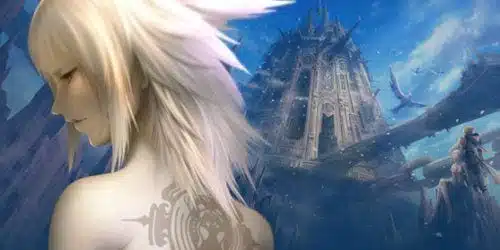
Two’s company, three’s a crowd.
Xenoblade Chronicles, The Last Story, and now Pandora’s Tower have arrived on European shores for the Wii. For a full sweep, Pandora’s Tower, though, needs a small time publisher (like XSEED, which most recently did so with The Last Story) to take pity on it and release it stateside (because Nintendo of America sure as hell isn’t going to). But honestly if they don’t, you guys really aren’t missing out on much, as this is easily the weakest of Nintendo’s JRPG trinity.
Each of the trio of titles has its own distinct style, and Pandora’s Tower is no different. In this case, the developers have opted for a Castlevania-esque theme, i.e. the inclusion of swords, whips, and a light Gothic horror feel. The speedy intro is also quite surprising for the genre. Within five minutes or so of booting up my Wii, I was beating up on monsters both large and small. With the easy to navigate menus and cutscenes that can be skipped, the light touches that make up what I call “new JRPG” are in full force here. But so are the forces of “old JRPG,” i.e. the nonsensical, rubbish story.
So here goes…
A continent divided, having been ravaged by war, finds peace. Peace stalls, hell breaks loose, monsters attack, they infect an important dancing girl, the important dancing girl turns into a monster, an androgynous boy rescues the important dancing girl and finds that she will permanently turn into a monster unless the androgynous boy can defeat the monsters based in 13 towers by feeding the important dancing girl their flesh.
Make sense? Is your interest piqued yet? Have you heard any of this before?
As our trio flee pursing army forces (who wish to do something nasty to the infected), they set up camp at an unused army base, overlooking a giant, bottomless tear in the planet known as the “Scar.” The Scar is being held together by twelve chains at the center of which is the 13 towers of Pandora, all of which are interconnected — sort of like a fantasy Kowloon Walled City.
Our hero goes about defeating the bosses one by one in all of the towers with his upgradeable sword and his Oraclos Chain, which he can use to bash enemies with, ensnare them, trip, rip, drag, and even attach multiple monsters to. Additionally, it allows you to grab items and grapple to and traverse environments.
Problem is… I’ve done this all before — only better. The clunky movement doesn’t lend itself well to the platforming acrobatics that its developers wish to convey. Also, the year 1996 rang, and it said it wants it camera back (it is one of the most restricted and suffocating of recent years). Finally, the simple puzzles, identical looking levels, grainy PS2-like graphics, generic monsters and music, overly long boss battles, frustratingly limited inventory, expensive items, and artificial extension of game length via (yes, you guessed it) level grinding and backtracking only serve to exaggerate the feeling that you’re trapped in some sort of time warp as you experience all of the nuances of 1990s game development. The combat boils down to pressing just one button, which you have to mash 100 times just to defeat the tiniest of monsters. There’s not even a jump button, and the difficulty spikes so high half way through that most will likely give up anyway.
One plus point is that when the timer that measures our heroine’s transformation from girl to beast runs out of time, she’s dead. This does create a sense of urgency as you hurry back to base to feed her monster guts (which she hates doing because she’s a vegetarian), all while you absorb darker, often distressing changes in the overall mise-en-scène. In these moments, the game successfully communicates the draining of one life and the birth of something much worse. However, this trick soon outstays its welcome as you realize that it is only there to extend the game length and greatly halts you on your march onward.
It is a pity that Pandora’s Tower has been grouped together with both Xenoblade Chronicles and The Last Story, as there is no narrative link and the similarities between the games are superficial at best. It doesn’t stand a chance against these two heavyweights, but even when spoken of on its own merits, it still isn’t strong enough.
Credit for trying, but for the sake of everyone else, here’s another saying: two out of three ain’t bad.

